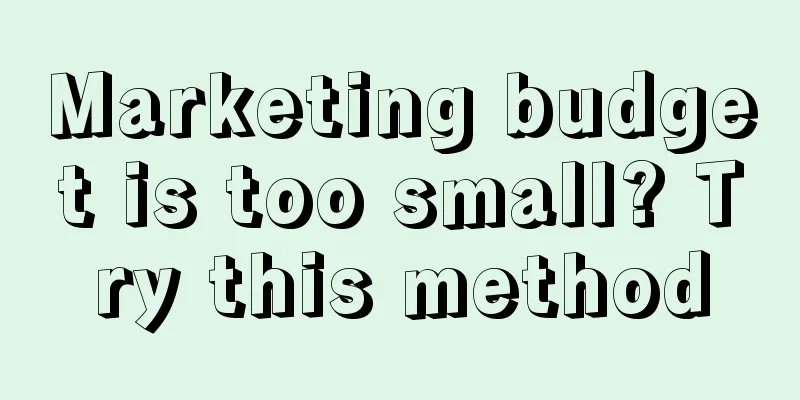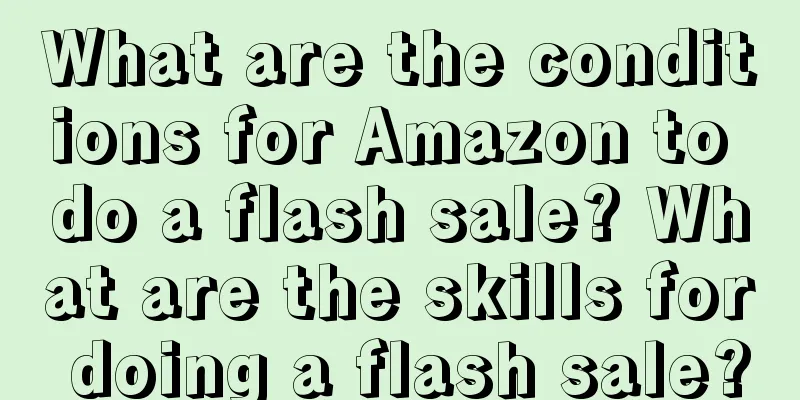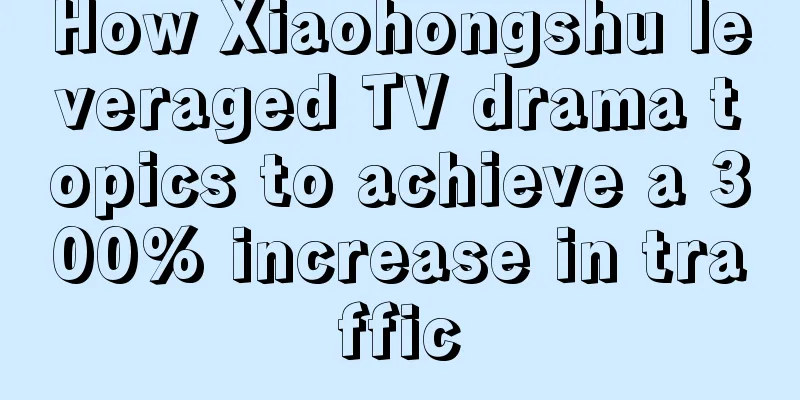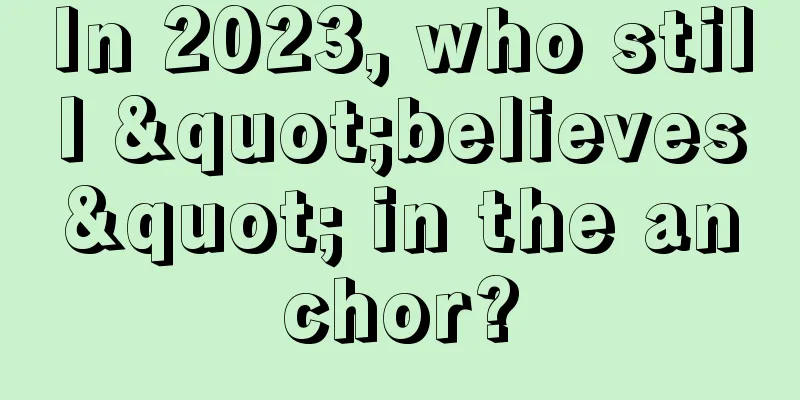Marketing budget is too small? Try this method

Small budget is one of the biggest pain points for marketers today.
Indeed, if you have absolutely no money and your brand is not well-known, I don’t know what good solution there is. However, if you have some budget, you can use the idea of theme campaign to integrate resources and maximize profits. At the end of last year, I participated in the planning of a campaign for domestic companies to go global, which further verified that with a very small budget, it is still possible to gain customer reputation and high ROI. Of course, some readers may still wonder when they see this. The word Campaign is not a new word at all. It is even quite traditional (outdated). Why is it being brought out again at this difficult juncture? Today let’s talk about “Campaign” ideas and methods. 01 What is Marketing CampaignBefore writing this article, I checked a lot of articles from industry leaders. It was really a headache to translate this word into Chinese. Integrated marketing, marketing campaign...are not accurate. Also, the English pronunciation of this word is hard to grasp and it is quite difficult to pronounce. After working in foreign companies for so many years, I am most afraid of saying this word in English. Later I found that it would be easier if I took them apart and looked at them. The root of Campaign is Camp. This word is used to refer to the most popular term "camping" nowadays. Campaign originally referred to holding activities on a large open space. Later it came to mean "political, commercial or military activities". Friends who love American TV series have the impression that Campaign in "House of Cards" and "The Good Wife" refers to the presidential election. In the military, campaign refers to a campaign. In the past when marketing was compared to the air force, it seemed quite appropriate to translate it as "marketing campaign". But in the new era of co-creation with users and digitalization, it seems awkward to say so. "Theme event" and "series of events" cannot express the marketing combination that integrates UCG, advertising, and PR. I will use "Campaign" in this article. (If you have any good suggestions, please leave a message to tell me) When Big idea was the main theme of marketing, Campaign was a hot word. Apple's "Think" brand campaign, Salesforce's "No software" and IBM's "Smarter Planet" are all big-budget campaigns. It seems that this is something that only wealthy companies can afford. Why do I recommend that everyone use more campaign ideas to do marketing when the budget is smaller? Let’s take a look at the official explanation of this word in the Cambridge English Dictionary: “to organize a series of activities to try to achieve something.” There are several key words: “a seriers” means a series, that is, it is not a single activity or an advertisement, but a combination of activities. "Achieve something" means achieving a goal, such as brand promotion, new product launch, etc. For most companies, it is brand awareness and business opportunities or growth indicators. Therefore, Campaign is the implementation of a focused, integrated, and goal-oriented marketing strategy. 02 Benefits of Campaign PlanningA carefully planned series of campaigns, with a unified theme, standard design, and methodical promotion and dissemination, can leave a deep impression on customers through multiple touches and repeated dissemination, and the effect will be better than a scattered approach. At the same time, when the budget is tight, a campaign with a unified theme is relatively easy to gain support from internal business departments. If every quarter's plan consists of many small activities (including sponsorship), marketers will often be too busy to count and be stingy... The results may not be good, and the sales department often doesn’t appreciate it, which is really aggrieved. Campaign integrates resources and spends money wisely. Campaign is the internal proposal of the marketing department, which is responsible for the results. Although it is a challenge, it is also a way to improve the status of the marketing department. In addition, a unified theme can also allow the marketing department to take the initiative and prevent sales from making sudden decisions. For example, smart hardware companies use "smart retail" as the theme of their campaigns, with product launches and KOL promotions online, annual user conferences offline, sponsorship of the China Retail Show, and retail customer case promotions. With unified slogans and external publicity materials, and a combination of online and offline collaboration, it has gradually established its absolute leadership in the retail field. Then the company's marketing activities in the transportation and medical industries should be appropriately reduced, and it should concentrate its efforts on seizing the opportunities of June 18 and Double Eleven to vigorously expand the market. 03 Campaign Content1. First, the background introductionWhy choose this as your marketing focus and not others? The analysis can be done from multiple dimensions such as the market environment, competitive situation, customer needs, corporate advantages, past data, etc. It does not have to be particularly complicated, but the logic must be clear. 2. Target estimationWho are the target customers, how big the market space is, expected sales leads, brand influence, etc. Only when the goals include quantitative and qualitative indicators can they convince cross-departmental decision makers within the company and external ecological partners. 3. What should the campaign do?For example, the smart retail campaign mentioned above includes offline large-scale events, partner events, online official website pages, KOL promotion, social media... According to the goal, break down each marketing method to achieve the overall goal. 4. Campaign Information HouseUnder the same theme, different focuses can be highlighted for different decision makers, or the communication rhythm can be phased. 5. Gantt chart for specific implementationUsing this sketch, it is clear what needs to be done every quarter or even every month. 6. Quantitative and qualitative indicators for each itemFor example, how many customers should be covered by the regional activities, how many new customers are there, MQL/SQL indicators... Due to limited space, we did not discuss this in detail. The campaign span does not necessarily have to be the past one or two years, it can be annual or even quarterly. The scope is not limited to brand activities, but can also be product launch campaigns, PK competitor campaigns, corporate social responsibility campaigns, hot topic campaigns... Experienced marketers will find that a campaign is actually very similar to an annual plan, except that the content is more focused. 04 Execute the CampaignCompanies with limited budgets don’t have that many marketing tools, so they can narrow their focus. However, regardless of the size of the company, the key to a campaign is:
It seems easy to say, but in the actual implementation process, we often encounter three "no's". 1. Not sticking to a planIt was planned just for the sake of planning, but it got out of shape after the first activity was executed. For example, after the first event of the smart retail campaign mentioned above, the theme was changed and the design was started again... or there was a temporary event for the medical industry, and there was no follow-up for smart retail. Campaigns are about delivering a “combination punch”, not just throwing one punch and running away, then striking again in another place. But it doesn’t mean that once a plan is made, it cannot be changed. When a company faces a fierce competitive environment, it can actually have a certain degree of flexibility and shorten the campaign time. 2. No goals, or not daring to have goalsCampaign activities are designed based on the customer experience journey and emphasize multiple touches. Reasonable goals can not only measure and attribute results, but also gain support from other teams and partners. 3. Too many priorities, too hard to chooseThe choice of marketing investment is based on business strategy, but if the company has no strategy or takes one step at a time, it will be difficult to carry out campaigns. A step back is to combine activities first. For example, for activities that are all aimed at the manufacturing industry, combine them into one theme first, at least the slogan and poster elements are the same, and the content of the speakers' speeches at different activities is consistent. In fact, it is quite difficult to achieve this. Many times, marketing departments are stuck in a cycle of no focus –> no budget –> no effect –> no influence –> no budget. Focus, integration and goal orientation are the core of Campaign thinking and also the entry point to changing the status quo. If you've reached rock bottom, try again. Author: Hanni Source: WeChat public account: "Time Notebook (ID: Think-Growth)" |
<<: WeChat releases major new rules regarding public account advertising!
>>: Summer is here, and brand marketing in June should also heat up!
Recommend
In the era of inventory, it is the best time for retail to actively seek change | Annual trend
In 2024, when the retail industry is facing diffic...
Hua & Hua's new work "Sausage Mouth" is so ugly
In the era of information explosion, exaggerated a...
How many days can Shopee's vacation mode last? How to enable vacation mode?
Nowadays, many people are engaged in cross-border ...
100 episodes shot in 7 days, edited and released in 20 days: young people making money in mini-program short dramas
Mini-program short dramas, which have low producti...
How to contact the manual customer service on the Wish platform? Contact information
In addition to online stores, e-commerce platforms...
This is the real user portrait. Yours is just a list of gender, age and region.
Is it better to just list gender, age and region w...
Luckin Coffee started a price war with the price of 9.9 yuan, and my coffee shop became a "cannon fodder"
Luckin Coffee and Kudi are engaged in a fierce pri...
How often does Shopee's funding cycle occur? What should I pay attention to?
For merchants who have just settled in the Shopee ...
Mid-year review | Xiaohongshu's latest developments and trends
What are the latest developments and trends of Xia...
How to register in Shopee Taiwan? What are the requirements?
Shopee platform is developing rapidly and has grea...
Which is the best first site for Shopee? What are the options?
The Shopee platform is very popular now, but there...
How much is the annual salary of an account manager at Alibaba International Station? Is it suitable for this job now?
Everyone knows about the position of Alibaba Inter...
10,000-word article | B2B high-customer sales circle of friends content marketing SOP (including 3 template tools)
In fact, WeChat Moments is a very important operat...
What is "follow selling" on Amazon? Detailed answer
Amazon's sales model is mainly divided into fo...
I use AI to help 1,000 expectant mothers predict their babies' appearance, selling each order for 9.9 yuan
While large companies are exploring the commercial...









